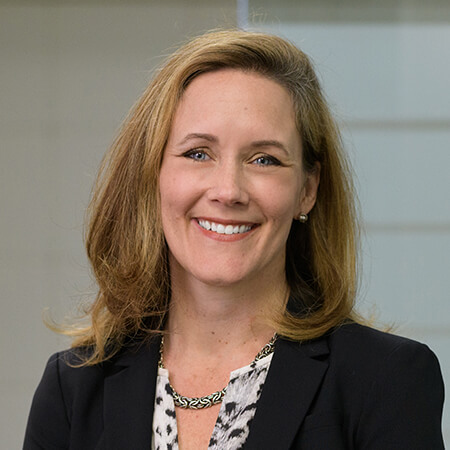With two months remaining in 2025 and a new tax bill recently passed with provisions that will affect charitable giving strategies, now is a great

Endowment Insights: Is the Turning Point Here to Add Private Investments?
Non-profit endowments and foundations face a pivotal moment in 2025, with some traditional revenue streams, including donations, in flux due to reductions in government spending and rising operational costs. These institutions—collectively managing trillions in assets—must generate sustainable returns to fulfill their missions which often includes a 5% annual draw against the corpus of their investment pool.
During an elongated period of low interest rates post COVID, the ability of traditional stocks and bonds to generate needed income and returns came into question. In search of an alternative path to create income during this period of “cheap” money, the allure of private markets was center stage given an expectation of an “illiquidity premium” of 2-3% returns above public equities under skilled management.1 As a response, over the past decade, many of the largest endowments increased their allocations into the alternatives space including private equity (PE) and venture capital (VC). According to MPI Transparency Lab, “private equity holdings now represent approximately 37% of assets under management (AUM)” of Ivy League endowments2 with unfunded commitments averaging 25.7% of portfolios.3
Yet, holders of private investments over the past few years have faced the headwinds of relative underperformance and an extended period of illiquidity. Looking at the last full calendar year, “in 2024, the S&P 500 Index outperformed private equity, venture capital, and private debt across every major time horizon for the first time in nearly 25 years.”4 Key issues included an overabundance of funding, mergers and acquisitions (M&A) were heavily scrutinized by government agencies, and the capital markets have been less receptive to taking companies public—hence an elongated period of illiquidity. As an offset, the high cash levels in the private company ecosystem provided the companies with an extended series of capital raises, funding them for years beyond the typical maturity date. As of the end of 2024, the “median period for private equity-backed portfolio companies has reached 5.8 years” compared to approximately three years back in 2000.5
Given PE commitments necessitate capital calls, as grants are called off, some institutions have shifted towards lowering their PE exposure. The methodology to reduce exposure involves either selling pre-existing fund commitments or assets in the form of a secondary fund, often at a discount to net asset value (NAV) to create liquidity and rebalance portfolios.
The process to clear the excessive inventory of funded private equity-backed companies along with the buildup of undeployed capital in PE funds still has a ways to go. However, we think the process is well under way into a relatively healthy backdrop considering that as we entered 2025, “credit markets were open, borrowing costs were dropping, [and] inflation stayed in check [which] sparked new energy, driving deal value to heights not seen since Q2 2022.”6 Although the backdrop has fluctuated, the expectation is that interest rates will continue to slowly move lower, the regulatory landscape will ease further, and we should have increased certainty on tariffs as we exit 2025.
If we are indeed off the bottom of the cycle, then the overhang of discounted PE inventory will clear up for the best assets where the discounts could prove appealing. Although the recent trend is to pivot towards balanced, liquid strategies to support the perpetual horizons inherent within endowment portfolios, we think having some exposure to private equity is rational. However, as is the case in all aspects of investing, diversification is the only free lunch, so we suggest moderation.
Given small to mid-sized endowments tend not to have internal investment teams, outsourcing the investment management task to a professional investment management firm such as Sand Hill Global Advisors can be an efficient path towards navigating complex markets. Thoughtful allocations for both your public (liquid) investment exposure and the alternatives sector, including gaining access to private companies, can help enable mission-aligned growth, anchored alongside institutional benchmarks designed to enforce diversification across uncorrelated assets, mitigating volatility while prioritizing liquidity.
1 – news.outsourceaccelerator.com/us-endowments-foundations-outsource
2 – www.markovprocesses.com/blog/elite-u-s-endowments-government-funding-and-liquidity-pressure
3 – www.institutionalinvestor.com/article/yales-potential-pe-sale-wont-solve-liquidity-challenges
4 – www.investopedia.com/etfs-that-outperform-private-equity-11754858
5 – www.privateequityinfo.com/blog/holding-periods-continue-to-grow-but-could-peak-in-2025
6 – www.cbh.com/insights/reports/private-equity-mid-year-trends-in-2025
Articles and Commentary
Information provided in written articles are for informational purposes only and should not be considered investment advice. There is a risk of loss from investments in securities, including the risk of loss of principal. The information contained herein reflects Sand Hill Global Advisors' (“SHGA”) views as of the date of publication. Such views are subject to change at any time without notice due to changes in market or economic conditions and may not necessarily come to pass. SHGA does not provide tax or legal advice. To the extent that any material herein concerns tax or legal matters, such information is not intended to be solely relied upon nor used for the purpose of making tax and/or legal decisions without first seeking independent advice from a tax and/or legal professional. SHGA has obtained the information provided herein from various third party sources believed to be reliable but such information is not guaranteed. Certain links in this site connect to other websites maintained by third parties over whom SHGA has no control. SHGA makes no representations as to the accuracy or any other aspect of information contained in other Web Sites. Any forward looking statements or forecasts are based on assumptions and actual results are expected to vary from any such statements or forecasts. No reliance should be placed on any such statements or forecasts when making any investment decision. SHGA is not responsible for the consequences of any decisions or actions taken as a result of information provided in this presentation and does not warrant or guarantee the accuracy or completeness of this information. No part of this material may be (i) copied, photocopied, or duplicated in any form, by any means, or (ii) redistributed without the prior written consent of SHGA.
Video Presentations
All video presentations discuss certain investment products and/or securities and are being provided for informational purposes only, and should not be considered, and is not, investment, financial planning, tax or legal advice; nor is it a recommendation to buy or sell any securities. Investing in securities involves varying degrees of risk, and there can be no assurance that any specific investment will be profitable or suitable for a particular client’s financial situation or risk tolerance. Past performance is not a guarantee of future returns. Individual performance results will vary. The opinions expressed in the video reflect Sand Hill Global Advisor’s (“SHGA”) or Brenda Vingiello’s (as applicable) views as of the date of the video. Such views are subject to change at any point without notice. Any comments, opinions, or recommendations made by any host or other guest not affiliated with SHGA in this video do not necessarily reflect the views of SHGA, and non-SHGA persons appearing in this video do not fall under the supervisory purview of SHGA. You should not treat any opinion expressed by SHGA or Ms. Vingiello as a specific inducement to make a particular investment or follow a particular strategy, but only as an expression of general opinion. Nothing presented herein is or is intended to constitute investment advice, and no investment decision should be made based solely on any information provided on this video. There is a risk of loss from an investment in securities, including the risk of loss of principal. Neither SHGA nor Ms. Vingiello guarantees any specific outcome or profit. Any forward-looking statements or forecasts contained in the video are based on assumptions and actual results may vary from any such statements or forecasts. SHGA or one of its employees may have a position in the securities discussed and may purchase or sell such securities from time to time. Some of the information in this video has been obtained from third party sources. While SHGA believes such third-party information is reliable, SHGA does not guarantee its accuracy, timeliness or completeness. SHGA encourages you to consult with a professional financial advisor prior to making any investment decision.
Other Posts By This Author
- – Why Muted Guidance Signals Sunshine Ahead
- – Can the Bull Market Continue to Run?
- – When Macro Overwhelms the Micro
- – Weight a Minute: Will GenAI Transform Your Figure?
Related Posts









